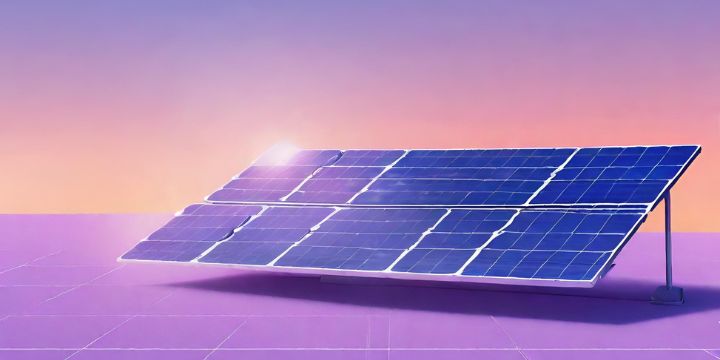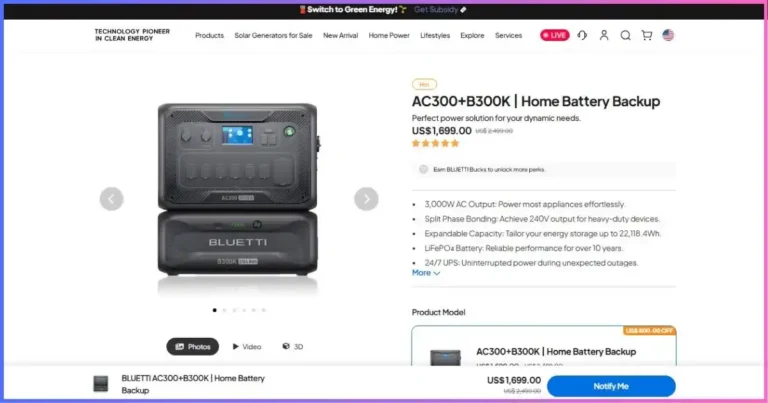Monocrystalline Solar Panels: How They Work, Pros & Cons

What are Monocrystalline Solar Panels?
Monocrystalline solar panels are made of silicon wafers that have a single continuous crystal lattice structure. This means the silicon molecules are perfectly aligned, allowing for the highest efficiency rates of any panel type.
Monocrystalline panels are the most expensive, but you get what you pay for.
- Highest Efficiency: Monocrystalline solar panels typically have the highest efficiency rates, around 15-20%, because the aligned silicon crystals allow for maximum absorption of sunlight. More sunlight absorbed means more electricity produced.
- Space Efficiency: Although monocrystalline panels tend to be the most expensive, you need fewer of them to produce the same amount of energy as polycrystalline or thin-film panels. So in the long run, you may actually save on total system cost.
- Long Lifespan: Properly installed monocrystalline panels can last up to 25-30 years. They are very durable and the efficiency degradation over time is very low at around 0.2-0.5% per year.
- Appearance: Monocrystalline panels have a uniform, smooth surface, and a symmetric shape. They are considered by many to simply look the most esthetically pleasing of all the panel types.
How Do Monocrystalline Solar Panels Work?
As an environmentally friendly source of energy, monocrystalline solar panels are comprised of silicon cells that convert sunlight into electricity.
Reliable Power Anywhere
Experience the freedom of portable power with Bluetti's cutting-edge solar generators and power stations. Whether you're camping, preparing for emergencies, or reducing your reliance on the grid, Bluetti offers reliable, eco-friendly solutions that keep you powered up anywhere.
Explore Bluetti Products NowMonocrystalline solar panels utilize monocrystalline silicon cells to transform sunlight into usable electrical energy. These cells are made from single-crystal silicon, the most effective semiconductor material for solar panels.
When sunlight is absorbed by the monocrystalline silicon cells, the energy from the light particles (photons) knocks electrons loose from their atoms, creating free electrons and holes (positive charges).
The flow of these electrons results in an electric current, which is captured and converted into energy that can power electrical devices and equipment.
Monocrystalline solar panels have solar cells with a uniform crystal lattice structure, enabling higher efficiency since the flow of electrons is less disrupted. The precisely aligned silicon atoms allow for an uninterrupted path through which electrons can travel.
Go Green with Bluetti
Take a step towards sustainability with Bluetti’s advanced solar technology. From high-capacity power banks to efficient solar panels, Bluetti helps you harness the power of the sun to reduce your carbon footprint without compromising on performance.
Shop Sustainable Power SolutionsThis highly ordered atomic structure gives monocrystalline solar panels their characteristic appearance of small square cells.
The Benefits of Monocrystalline Solar Panels
Monocrystalline solar panels offer several advantages over other types of solar panels. Their high efficiency means they can produce more electricity using the same amount of space.
Monocrystalline solar cells are made from single-crystal silicon ingots, giving them a characteristic flat, uniform appearance and higher purity than other types of silicon.
The tight atomic structure of monocrystalline silicon allows electrons to move more freely, which translates into higher efficiency rates. Monocrystalline solar panels typically have efficiency ratings of 15-20% or more, compared to 13-16% for polycrystalline solar panels.
Their higher power density means monocrystalline solar panels require less surface area to generate the same amount of electricity as polycrystalline panels.
Monocrystalline solar panels also tend to have a longer lifespan. Their durable construction can provide efficient, reliable energy production for 25-30 years or more. Although monocrystalline solar panels tend to cost slightly more upfront, their higher efficiency and longer lifespan provide a higher return on investment.
Over the lifetime of a residential solar panel system, the additional energy generated by monocrystalline panels can offset their initial cost difference.
The space efficiency and longevity of monocrystalline solar panels make them an ideal choice if you have limited roof space or want to maximize your energy production. Their sleek, uniform appearance also tends to have more aesthetic appeal.
Power Your Adventures
Don't let power outages or off-grid adventures slow you down! Bluetti's portable solar-powered solutions are designed for convenience and efficiency, making them the perfect companion for any lifestyle.
Discover Bluetti's Portable PowerWhile the initial cost of monocrystalline solar panels is often higher, their energy productivity and durability provide significant benefits that make them worth the investment for many homeowners and businesses.
In summary, the main benefits of monocrystalline solar panels are:
- Higher efficiency and power density
- Longer lifespan and durability
- Space efficiency
- Higher return on investment
- Aesthetic appeal
Monocrystalline solar panels are an excellent option if performance, reliability, and aesthetics are priorities for your solar panel system. Their premium components and tightly controlled manufacturing process produce solar panels of exceptional quality and value.
Disadvantages of Monocrystalline Solar Panels
While monocrystalline solar panels are highly efficient, there are some notable disadvantages to consider before installing them.
Higher Upfront Cost
Monocrystalline solar panels are typically the most expensive type of panel, often costing 20-30% more than polycrystalline panels. The manufacturing process required to produce monocrystalline silicon and turn it into solar cells is complex, resulting in higher costs.
Although monocrystalline panels may produce energy more efficiently, the higher upfront cost can mean a longer payback period.
Potential Output Reduction
Monocrystalline solar panels can experience a greater loss of efficiency when their surfaces get covered or shaded. Any dirt, snow, or shade-reducing light exposure to the panels will directly impact energy production.
The uniform crystal structure of monocrystalline silicon makes its solar cells more prone to electron-hole recombination when shaded, lowering voltage and output. Regular cleaning and maintenance are required to prevent buildup and ensure maximum efficiency.
Performance in High Heat
While monocrystalline solar panels tend to be the most efficient in ideal conditions, their performance starts decreasing more dramatically in high heat.
As temperatures rise, the uniform atomic structure of monocrystalline silicon causes its electrons to move faster and become more scattered, reducing the amount of energy they can generate.
In very hot weather, energy output from monocrystalline panels may decrease by over 0.5% per degree Celsius increase, more than other panel types.
Limited Flexibility
Monocrystalline solar panels are more rigid and fragile than polycrystalline panels, making them harder to install on curved or uneven surfaces. Their perfectly aligned silicon crystal lattice is more prone to breaking under physical stress.
As a result, monocrystalline panels typically cannot be walked on and require more robust racking and mounting systems for installation. They may not be suitable for applications where flexibility, durability, and impact resistance are most important.
Disclosure: We may earn commission for purchases that are made by visitors on this site at no additional cost on your end. All information is for educational purposes and is not intended for financial advice. Read our affiliate disclosure.






